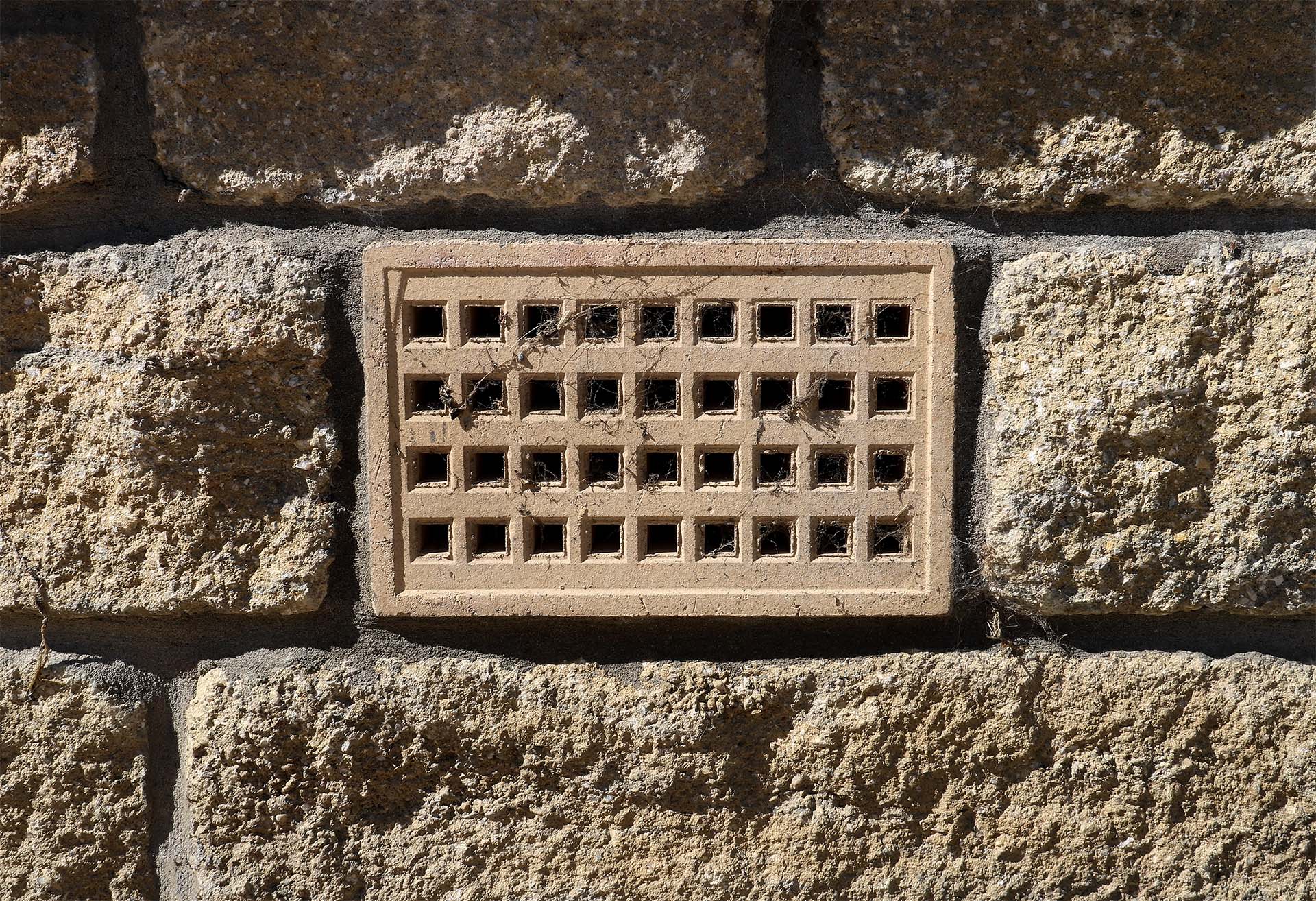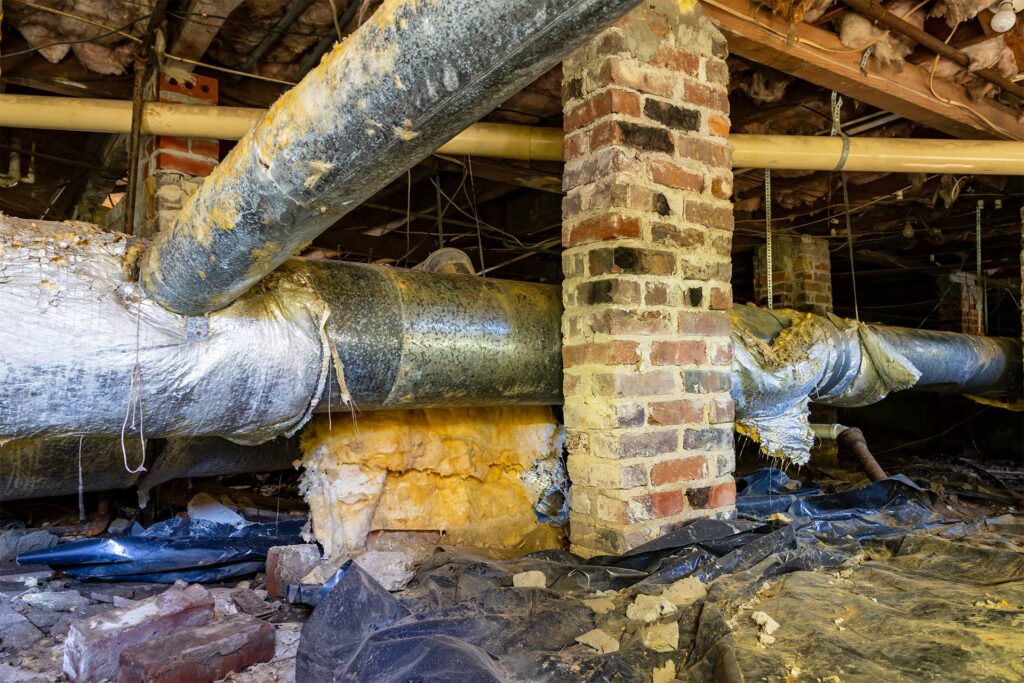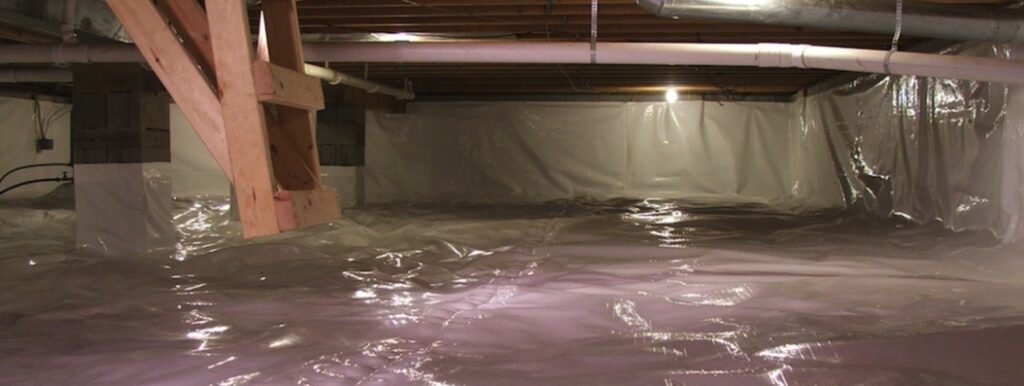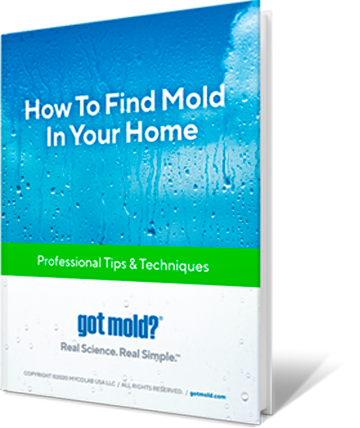
It doesn’t take a flood or water intrusion to create a mold problem in a crawlspace. In fact, in most North American climates, many if not all crawlspaces will end up with an issue at some point because they are inherently flawed—the consensus among building scientists is that they are building defects and should be outlawed.
Why? You may have noticed vents in the foundation around the perimeter of your house. The old-school thinking was that these would allow ventilation and prevent an accumulation of dampness, thus reducing the potential for mold/moisture problems. Seems logical, until one understands the way humidity is affected by temperature.
It’s helpful here to think of air as a sponge and to understand that warm air is able to hold more moisture than cold air. When temperatures go from warm to cold, thereby decreasing an air’s capacity to hold water, it’s like squeezing a sponge: excess water will come out. Think about when it’s 90F outside and 90% relative humidity (RH), meaning there’s a tremendous amount of moisture in the air. When the sun goes down, and as the air cools, dew appears on the grass. This is called condensation.
This is exactly what happens in a crawlspace during the warm, humid months. Warm, moist air goes through the foundation vents into your crawlspace — a cool, dark place — and the humidity condenses into little water droplets, just like dew, all over the floor joists, insulation and debris, creating a perfect opportunity for stuff to grow. And it’s not just mold. Rather it’s like having a pool party in your crawlspace and inviting everything that thrives in water—bacteria, insects, rodents, you name it. Fun for them, but not for you.

Of course, when the conditions are right, mold will begin to grow very quickly—in a matter of days. And once it begins to grow, it doesn’t go away. Mold will wait patiently for more moisture, and when that returns, the mold growth is exponential. One spore becomes a thousand, which becomes a million, and so on.
There’s also a misconception that a mold problem in a crawlspace isn’t a big deal. It’s so common and it’s not in the house, so theoretically exposure should be minimal. Nothing could be further from the truth. An estimated 95% of homes with crawlspaces have ductwork running through them. All ducts leak, and return ducts leak inward, sucking air from the crawlspace into the ducts and then redistributing it through the supply vents and into the home. (This is also true for basements.) There’s something else called “stack effect,” which we won’t go into, but for these two reasons — leaking ducts and stack effect — some studies have shown that as much as 75% of indoor air is derived from these moisture-prone spaces, especially during winter months when we rarely open windows for natural ventilation. Not good.
There are lots of different products on the market that claim to prevent mold growth or even “kill” it once it’s already on its path of destruction. The bad news is, these biocides offer little to no value, especially in the long run. They may be able to stop or reduce the growth for a short while, but if the dampness persists, the mold will grow. That’s a guarantee, up there with death and taxes. (For a deeper dive into why biocides are not recommended for dealing with mold, including why bleach will only make a mold situation worse, check out Say “No” To Biocides: No Need To Kill Mold.) .
Fortunately, the solution to your crawlspace woes is not as complicated as you may think. It involves something called a “closed crawlspace.” There are various versions, but the idea is simple: First, the crawlspace is cleaned of debris, mold growth, wet insulation, and the other byproducts of this “defect.” Then the crawlspace is sealed from the outdoors by modifying or blocking the foundation vents. The purpose is to prevent warm, moist air from coming in.
Now that you’ve stopped warm air from coming in, the next step is to prevent moisture from accumulating within the crawlspace. If you have a dirt crawlspace, you’ll either pour a slab or install an encapsulation system like the one offered through Western Pest. This kind of system involves installing plastic sheeting on the floor and foundation wall, like in the photo below.

Then you would either install a dehumidifier that drains into a sump pump or use fans and ductwork to bring drier air from the living space above into the crawlspace, thereby diluting the damp air and effectively dehumidifying the crawlspace.
This is not a technical article, nor is it meant to be a comprehensive how-to. If you want to know more about how this works and the science behind it, there’s been exhaustive research done in North Carolina, where the conditions are far worse than say in the Northeast. So if they can make it work down there, it will most certainly work in less humid climates. For a wealth of information, click here.
Unfortunately, there is no one-size-fits-all solution. Every building has different nuances depending upon whether it’s in a flood zone, how it’s constructed, the type of heating and cooling systems, and even the sensitivity of the occupants. This means it’s not really a weekend warrior kind of project.
When it comes to navigating these waters successfully, it’s wise to engage the help of an environmental consultant/inspector with specialized experience in this arena. Crucially, this consultant should NOT perform installations of these systems or provide mold remediation services. They are there strictly to evaluate the problem and design the solution, with an unrelated contractor coming in after to do the work. Any consultant/inspector handling all aspects of the job presents a massive conflict of interest and should be avoided.

